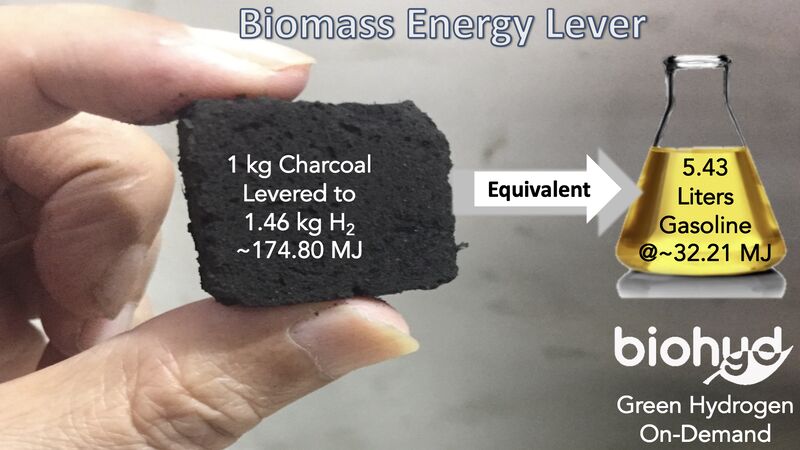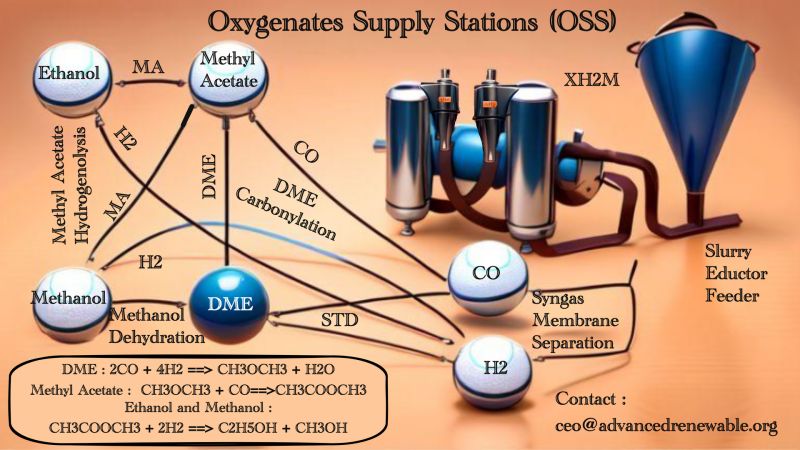Bio and Regenerative Hydrogen
Advanced Renewable
Tue , 14 May 2024 12:41 WIB

Abundant sources of clean energy are all around us, namely biomass, water and CO2. With these three we can produce biohydrogen or regenerative hydrogen wherever we need it. What's the difference between the two?
Biohydrogen is the separation of hydrogen from water using biomass or charcoal through the two reactions below, namely Water Gas (1) and Water Gas Shift (2). If added together it becomes reaction 3 the simplified one. From here we can see that hydrogen can be produced directly with just water and charcoal.
If we capture the CO2 that comes out of reaction 2 and process it again to produce hydrogen, the result is called regenerative hydrogen - namely hydrogen obtained by reprocessing the CO2 that came out of the previous process. For this you only need two reactions, namely Boudouard (4) and Water Gas Shift (5). If the two are added together it will produce the 6th reaction, from here we can see that unlike biohydrogen which is produced from charcoal and water, regenerative hydrogen is produced from CO2, charcoal and water.
The question is how can we react charcoal with water or CO2, charcoal and water to become effective hydrogen? That's where a tool called a reactor is needed. The reactor in the picture below is a reactor that we designed to facilitate bio and regenerative hydrogen production through the series of reactions mentioned above.
Ideally, this bio and regenerative hydrogen will be used directly as fuel for Internal Combustion Engine (ICE) and Fuel Cells (FC) engines, but this requires engines that are prepared to use hydrogen fuel. This is an opportunity for engine developers, that you can develop these hydrogen fuel engines massively - because the fuel will be available easily and cheaply.
While waiting for the mass production of hydrogen-fueled machines, we can use hydrogen to produce all types of fuel that we use today, such as gasoline, diesel and LPG. For this, all that is needed is additional ingredients in the form of CO gas - which is also produced from charcoal and water (reaction 1), or charcoal and CO2 (reaction 4). With a process called Fischer-Tropsch Synthesis (FTS), H2 + CO will produce whatever fuel we need mentioned above.
Because we can easily turn biomass from rubbish and waste into charcoal in a matter of minutes, CO2 is also abundant which is still considered a problem, even water, thank God we have it in excess, are we still going to perpetuate petroleum, most of which has to be imported and causes the atmosphere of our earth becoming dirtier?
This bio and regenerative hydrogen technology will be presented at the International Conference on Renewable Energy Gas Technology (REGATEC 2024), in Lund - Sweden, next week.
Pos Lainnya
Keluarga Bahan Bakar Regeneratif
May 14, 2024
Arang Seharga Bensin, Why Not?
May 14, 2024
Energi Bersih Di Antara Kotoran Dan Limbah
May 14, 2024
The Oxygenates
May 14, 2024
CO2? Just Can It!
May 14, 2024
Kategori
Renewable Energy






Silakan mendaftar terlebih dahulu!
Untuk memposting komentar baru. Anda harus login terlebih dahulu. Masuk
Komentar
Tidak ada komentar